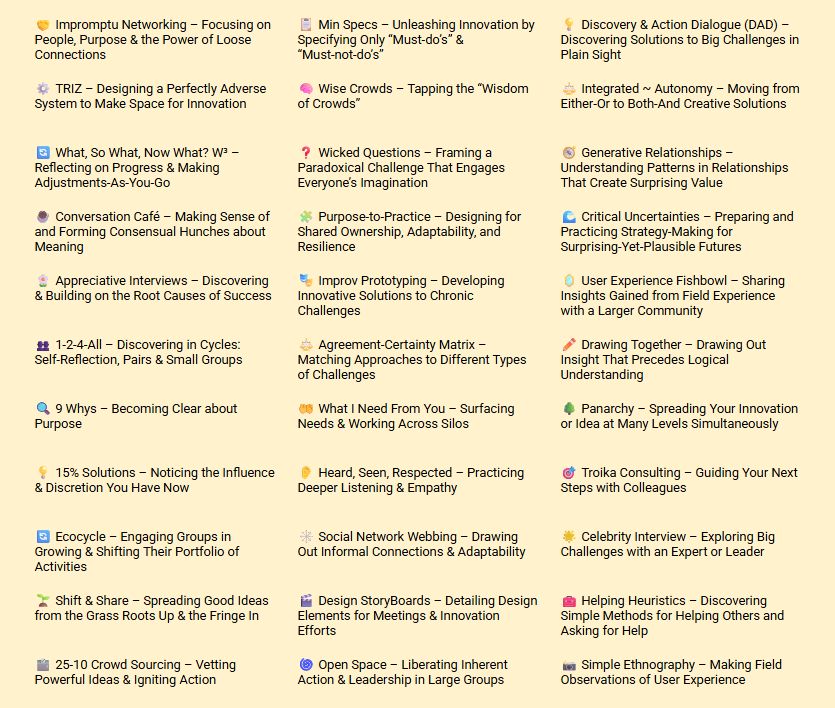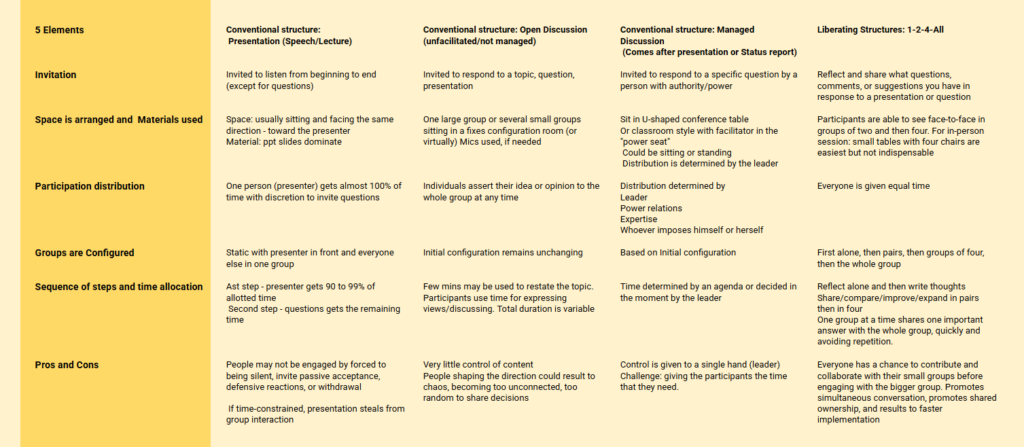Table of Contents
ToggleAre your meetings falling flat? Do your brainstorming sessions feel chaotic and unproductive? Many organizations struggle with collaboration, often stuck between rigid, top-down presentations and unstructured, open discussions. “The Surprising Power of Liberating Structures: Simple Rules to Unleash a Culture of Innovation” by Henri Lipmanowicz and Keith McCandless offers a powerful alternative. This book is more than a one-time read; it’s a reference guide you’ll return to again and again to transform how your teams interact, innovate, and achieve results together.
This review will explore why this book is an essential resource for leaders, managers, and consultants. We will look at its overall message, break down how the content is structured, and highlight the key takeaways you can apply immediately. You’ll discover how these simple methods can foster a culture of inclusion, trust, and genuine engagement.
An Essential Toolkit for Modern Leaders
The Surprising Power of Liberating Structures” is more than just a book; it’s a manual for revolutionizing group dynamics. The authors provide a clear and compelling case for why conventional meeting formats often fail to tap into the collective intelligence of a group. More importantly, they offer a collection of 33 practical step-by-step methods—the Liberating Structures—to fix this.
This book is a valuable resource for every leader as it explains how to boost engagement and achieve better results in group settings. It provides clear, step-by-step instructions for 33 “Liberating Structures”—simple rules for interaction—and guides you on when to apply each one. The core idea is to foster deep inclusion and trust, empowering every voice in the room to unlock hidden solutions and ideas.
How the Book Is Structured
Lipmanowicz and McCandless have organized the book for maximum usability. It’s designed to be a resource you can return to again and again as you face different challenges.
The Case for a New Approach
The book begins by explaining the shortcomings of traditional methods. It contrasts the “too tight” control of presentations and managed discussions with the “too loose” nature of open brainstorming. These conventional approaches either stifle participation or lead to chaos, often allowing the loudest voices to dominate.
Introducing Liberating Structures
Next, the authors introduce the concept of Liberating Structures. These are “microstructures”—small, simple rules for interaction that can be used for any purpose, from strategy development to daily check-ins. The book explains who can use them (everyone!) and how they distribute control, ensuring all participants can shape the direction of the conversation.
A Field Guide to Transformation
The heart of the book is a detailed guide to each of the 33 Liberating Structures. Each one gets its own section, complete with a clear purpose, step-by-step instructions, and tips for effective facilitation. This format makes it easy to find the right tool for your specific need, whether you’re trying to generate ideas, make a decision, or build shared understanding.
Advanced Applications and Use Cases
Finally, the book explores how to combine Liberating Structures into “strings” for more complex challenges. It provides sample use cases and StoryBoards, showing how these simple tools can be sequenced to tackle sophisticated organizational problems. This section demonstrates the versatility and scalability of the approach.
Key Takeaways from the Book
The power of Liberating Structures is not just surprising; it’s infectious. When people experience meetings that are both structured and liberating, they feel energized and want to work this way more often. Here are some of the most important lessons from the book.
Why Conventional Methods Fail
Our typical ways of interacting in groups fall into two traps.
- Too Tight: Formats like presentations, status reports, and managed discussions are overly controlling. They limit participation, give one person all the power, and make it impossible to get diverse input.
Too Loose: Open discussions and unstructured brainstorming can be just as ineffective. They often favor the “HIPPO” (Highest Paid Person’s Opinion), lack clear purpose, and can quickly become chaotic and disengaging.
What Liberating Structures Really Are
Liberating Structures are simple methods designed to improve performance by including and engaging everyone. The secret is to stop talking about changing and just do it. Start small and slowly scale through the methods. They work by subtly shifting control of the content to all participants, fostering collaboration in organizing, problem-solving, and decision-making.
When these structures become part of an organization’s daily life, ten key principles emerge:
- Include and unleash everyone.
- Practice deep respect for people and local solutions.
- Build trust as you go.
- Never start without a clear purpose.
- Learn by failing forward.
- Practice self-discovery within a group.
- Amplify freedom and responsibility.
- Emphasize possibilities: believe before you see.
- Invite creative destruction to make space for innovation.
- Engage in seriously playful curiosity.
How to Start Using Liberating Structures
perhaps with a small, trusted group, and experiment with one of the structures. The book encourages you to let people experience the difference rather than debating it endlessly.
The path to fluency is accessible to everyone. Senior leaders can invite their teams to try, but should never impose it. Managers and individual contributors can start small, weaving microstructures into their regular meetings. Consultants can introduce them to clients, building expertise and scaling up as they go.
Every Liberating Structure is built and implemented with these five elements:
- An Invitation: A question or request that frames the purpose.
- Space Arrangement: How the physical space and materials are set up.
- Participation Distribution: How time and voice are distributed among participants.
- Group Configuration: How people are grouped and re-grouped.
- Sequence and Time: The steps involved and the time allocated for each.
Lipmanowicz and McCandless offer a comprehensive guide for each structure, including application instructions, recommended scenarios, and real-world examples from diverse organizations. By making subtle adjustments to these elements, you can profoundly alter the outcome of any interaction. For instance, the book provides a quick example of a professor who revolutionized his class simply by having his students sit in a circle instead of traditional rows.
Final Thoughts
“The Surprising Power of Liberating Structures” is a must-read for anyone who believes in the power of collaboration. It offers a clear, actionable, and inspiring path toward creating a culture of innovation, trust, and shared ownership. By providing simple rules to guide interaction, these structures make it easy to unleash the collective intelligence of any group. If you’re ready to move beyond unproductive meetings and unlock your team’s true potential, this book provides the tools you need to start today.
About the Author

Rochelle Tan
As an Agile Evangelist, Rochelle Tan has over 20+ years of experience in agile transformation with small to large organizations from various industries in North America and Asia: Oil and Gas, IT, Healthcare, Finance, Insurance, and Government.


